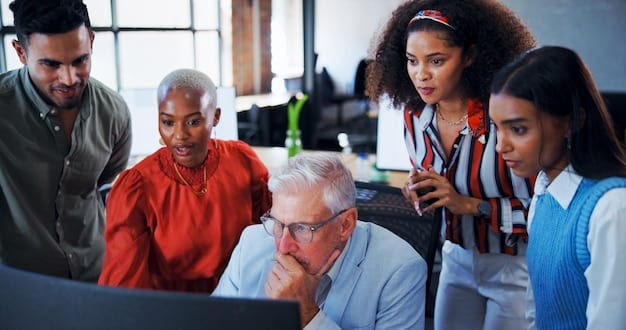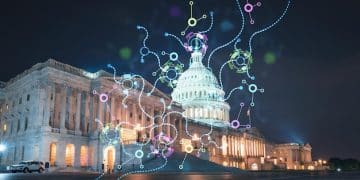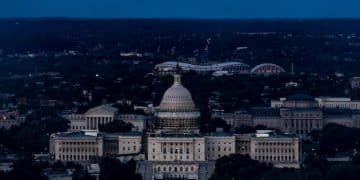Aging Workforce Impact: Productivity & Innovation

Advertisements
The aging workforce profoundly reshapes business productivity and innovation by introducing both significant challenges, such as potential skills gaps and health-related costs, and unique opportunities, including valuable experience, mentorship, and enhanced problem-solving capabilities, necessitating strategic adaptations from organizations.
Advertisements
The global demographic shift towards an older population is not just a societal trend; it’s a powerful force reshaping the economic landscape. Businesses across various sectors are increasingly confronting the impact of the aging workforce on business productivity and innovation, a dynamic that presents a complex interplay of challenges and unprecedented opportunities. Understanding and strategically navigating this evolving workforce composition is paramount for long-term organizational success and sustained competitive advantage.
Navigating the Demographic Shift: Understanding an Aging Workforce
The contemporary global workforce is undergoing a profound transformation, marked by an increasingly older demographic. This shift is driven by a combination of factors, including declining birth rates, increased life expectancy, and advancements in healthcare that enable individuals to work longer. For businesses, this translates into a higher proportion of older employees, bringing with them a wealth of experience but also raising questions about adaptability and future readiness. It’s essential to recognize that an aging workforce is not a monolithic entity; it encompasses a wide spectrum of skills, knowledge, and perspectives, each contributing uniquely to the organizational fabric.
Advertisements
Understanding the nuances of this demographic shift requires moving beyond simplistic assumptions. We must consider the various ways in which older workers interact with technology, their preferred learning styles, and their motivations for remaining in the labor force. This intricate understanding forms the bedrock for developing effective strategies that leverage the strengths of an intergenerational workforce, fostering an environment where all employees can thrive and contribute meaningfully. Without this foundational comprehension, businesses risk overlooking valuable human capital and failing to adapt to the realities of the 21st-century economy.
The drivers behind an older workforce
Several intertwined factors contribute to the ongoing increase in the average age of the global workforce. These include societal changes, economic pressures, and individual choices. Each of these elements plays a significant role in determining how businesses experience and respond to this demographic shift.
- 📈 Longer life expectancies: Advances in medicine and public health allow people to live healthier, longer lives, enabling them to work well past traditional retirement ages.
- 📉 Declining birth rates: Lower birth rates in many developed countries mean fewer young entrants into the workforce, skewing the age distribution towards older cohorts.
- 💰 Economic necessity: For many individuals, economic realities, such as insufficient retirement savings or rising costs of living, necessitate continued employment.
- 🌟 Desire for continued engagement: Many older adults wish to remain professionally active, seeking intellectual stimulation, social connection, and a sense of purpose.
Defining “aging workforce” in a business context
The term “aging workforce” typically refers to an increase in the median age of employees within a company or economy. It’s not just about individuals reaching a certain age, but rather the collective impact of a workforce where a growing segment is approaching or has surpassed traditional retirement benchmarks. This implies a need for businesses to re-evaluate traditional career paths, training programs, and benefits structures to accommodate the unique needs and contributions of older employees.
The implications extend to succession planning, knowledge transfer, and fostering an inclusive environment that values age diversity. Companies must consider how to retain valuable institutional knowledge, ensure skill relevancy, and mitigate potential biases against older workers. Ultimately, a clear definition helps organizations frame their response, moving beyond a reactive stance towards proactive workforce planning.
In conclusion, the demographic shift towards an aging workforce is a complex, multifaceted phenomenon. It necessitates a deep understanding of its underlying causes and implications for businesses. By recognizing the diverse nature of older workers and the factors driving their continued participation, organizations can begin to formulate strategies that effectively harness their potential, ensuring productivity and fostering innovation. This foundational understanding is the first step in transforming a potential challenge into a significant competitive advantage.
Direct Impacts on Productivity: Challenges and Opportunities
The presence of an aging workforce carries a dual effect on business productivity, presenting both formidable challenges and compelling opportunities. On one hand, concerns often arise regarding potential declines in physical stamina, technological adaptability, and the associated costs of healthcare. These aspects, if not proactively managed, can indeed impact efficiency and output. However, dismissing the contributions of older workers based solely on these concerns would be a grave oversight. Their extensive experience, nuanced judgment, and strong work ethic can lead to significant gains in quality, stability, and problem-solving capabilities, often counterbalancing perceived drawbacks.
Effectively measuring and understanding these direct impacts requires a balanced perspective. It’s not merely about averages but about individual capabilities and the organizational context that either amplifies or dampens their contributions. Businesses that foster an inclusive environment and invest in continuous learning for all age groups are better positioned to harness the full productive potential of their diverse workforce, turning challenges into strategic advantages.

Potential challenges to productivity
While experience is invaluable, some common concerns about an aging workforce relate to direct productivity metrics. These challenges, when unaddressed, can create bottlenecks or increase operational costs. Businesses must identify and mitigate these risks to maintain efficiency.
- Physiological changes: Diminished physical strength or stamina may affect roles requiring manual labor or prolonged standing.
- Technology adoption curve: While not universal, some older workers may require more training or time to adapt to new technologies.
- Health-related costs: An older workforce can present higher healthcare and insurance costs, impacting the bottom line.
- Succession planning gaps: A large cohort retiring simultaneously can create critical knowledge and skills gaps without proper planning.
Addressing these challenges isn’t about age discrimination, but about strategic workforce development. This includes ergonomics, targeted tech training, wellness programs, and robust succession strategies.
Unlocking productivity opportunities through experience
Conversely, the wealth of experience held by older workers offers significant productivity advantages. Their deep understanding of processes, client relationships, and industry nuances can remarkably enhance efficiency and effectiveness. This is where their value truly shines, often offsetting any perceived physical or technological limitations.
Experience fosters efficiency. Older workers often have refined workflows, anticipate problems before they arise, and possess a comprehensive understanding of business operations that younger employees are still acquiring. Their historical perspective allows for more informed decision-making, reducing errors and re-work. This leads to higher quality output and more stable operations.
Moreover, their strong work ethic and loyalty, often forged over decades of professional dedication, contribute to lower turnover rates. This stability, in turn, reduces recruitment and training costs, directly boosting overall productivity. An experienced workforce often requires less supervision, freeing up management resources for strategic initiatives rather than day-to-day oversight.
Their ability to mentor, described in detail later, also indirectly contributes to the productivity of the entire team. By imparting specialized knowledge and best practices, they accelerate the development of younger colleagues, creating a more skilled and efficient collective. This transfer of tacit knowledge, often gained through years of trial and error, protects institutional memory and enhances organizational resilience.
To fully capitalize on these opportunities, companies should implement strategies that integrate older workers seamlessly into teams, ensuring their expertise is utilized effectively. This might involve creating roles specifically designed to leverage their wisdom, such as senior advisory positions or mentorship programs. Recognizing and rewarding this experience is key to fostering an environment where productivity thrives across all age groups.
In sum, the direct impact of an aging workforce on productivity is a complex balance of challenges and opportunities. While some physical and technological adaptations may be necessary, the profound benefits derived from experience, stability, and work ethic often provide a significant competitive edge. Businesses that proactively manage potential downsides and strategically leverage the strengths of their older employees will find themselves at a distinct advantage in the evolving economic landscape.
Innovation and the Aging Workforce: A Multifaceted Relationship
The relationship between an aging workforce and organizational innovation is far more nuanced than often portrayed. While some might assume that older workers are less adaptable or resistant to change, a deeper analysis reveals a complex dynamic where experience can both inform and inspire novelty. Innovation isn’t solely about disruptive, new ideas; it also encompasses process improvement, subtle adaptations, and the wise application of accumulated knowledge. An aging workforce, therefore, brings a unique set of attributes that can either foster or hinder innovation, depending on how an organization cultivates its intergenerational dynamics.
Understanding this multifaceted relationship means moving beyond stereotypes and recognizing that innovation thrives on diverse perspectives. When different generations collaborate effectively, the confluence of fresh insights and seasoned judgment can lead to more robust, well-rounded, and sustainable innovative solutions. The challenge lies in creating an environment that actively encourages this cross-pollination of ideas, allowing the rich tapestry of an organization’s collective intelligence to fully contribute to its innovative capacity.
Experience as a catalyst for innovation
Far from being an impediment, the experience of an aging workforce can be a powerful catalyst for innovation. Seasoned professionals often possess a deep understanding of historical contexts, market trends, and practical solutions to recurring problems. This institutional memory is invaluable in steering innovative efforts, preventing the re-invention of the wheel, and ensuring new ideas are grounded in reality. Their extensive networks and understanding of client needs can also unlock new avenues for product or service development.
Furthermore, older workers often excel at problem-solving, leveraging years of diverse challenges to approach new issues with a pragmatic and insightful perspective. This depth of experience allows them to identify subtle opportunities for improvement or anticipate potential pitfalls that might be overlooked by less experienced colleagues. They provide a steady hand in navigating uncertainty, ensuring that innovative ventures are pursued with a clear vision and a strong foundation.
Bridging the generation gap for enhanced creativity
True innovation flourishes in environments where diverse perspectives converge. The challenge, then, is not to avoid an aging workforce, but to actively bridge the generation gap to harness collective creativity. This involves establishing effective communication channels and collaboration frameworks that ensure younger employees’ fresh ideas can interact productively with the wisdom and experience of older colleagues.
Creating mentorship programs, cross-functional teams, and reverse mentoring initiatives where younger employees teach older ones about new technologies can be incredibly effective. These strategies break down silos, foster mutual respect, and create a synergistic environment where innovative ideas are born from the interplay of different viewpoints. When a company successfully blends the energy of youth with the prudence of experience, it unlocks a potent force for sustained creativity and competitive advantage.
Adaptability and continuous learning in later careers
The notion that older workers are inherently less adaptable or resistant to learning new skills is often a misconception. While learning styles may evolve with age, the capacity for continuous learning and adaptation remains. Many older professionals are highly motivated to maintain their relevance and actively seek opportunities to acquire new competencies, especially in areas like digital literacy.
Organizations that invest in continuous learning programs tailored to different age groups can significantly boost the adaptability of their aging workforce. Providing access to online courses, workshops on emerging technologies, and opportunities for skill regeneration ensures that older employees remain agile and contribute effectively to an innovative environment. This commitment to lifelong learning is crucial for nurturing a workforce capable of driving innovation at every stage of their careers, irrespective of age.
Ultimately, the impact of an aging workforce on innovation is not a simple equation. It is a dynamic interplay of accumulated wisdom, creative potential, and organizational culture. By actively leveraging experience, bridging generational gaps, and fostering a commitment to continuous learning, businesses can transform their older demographic into a powerful engine for novel ideas and sustained growth, rather than viewing it as an obstacle.
Knowledge Management and Succession Planning
In the context of an aging workforce, effective knowledge management and robust succession planning emerge as critical pillars for organizational continuity and long-term success. As experienced employees approach retirement, the potential loss of institutional knowledge, specialized skills, and tacit wisdom becomes a significant concern. Without proactive strategies to capture and transfer this invaluable intellectual capital, businesses risk experiencing substantial operational disruptions, declining productivity, and a diminished innovative capacity.
This section delves into the strategic importance of safeguarding organizational memory and preparing the next generation of leaders. It explores methods for systematic knowledge transfer and the development of comprehensive succession plans that ensure critical roles are filled by well-prepared individuals, mitigating the “brain drain” often associated with an aging demographic. By prioritizing these areas, companies can transform potential vulnerabilities into opportunities for structured growth and sustained excellence.
Mitigating “brain drain” through knowledge transfer
One of the most pressing challenges associated with an aging workforce is the risk of “brain drain” – the exodus of invaluable institutional knowledge and tacit skills when experienced employees retire. This knowledge, often uncodified and deeply embedded in routines and relationships, is difficult to replace. Without structured knowledge transfer mechanisms, companies stand to lose years of accumulated wisdom, client insights, and operational efficiencies, leading to potential productivity dips and strategic missteps.
To mitigate this, organizations must implement proactive knowledge management strategies. These include formal mentorship programs, where experienced workers are paired with younger colleagues to share insights and best practices. Cross-training initiatives ensure that specific skills are not concentrated in a few individuals, fostering redundancy and resilience. Documenting processes, lessons learned, and client histories through wikis, internal databases, and regular knowledge-sharing sessions also proves vital.
Succession planning: Preparing the next generation
Effective succession planning goes hand-in-hand with knowledge management. It involves identifying critical roles within the organization and developing a pipeline of qualified internal candidates to fill those positions as current incumbents retire or move on. For an aging workforce, this becomes even more crucial, as a significant portion of leadership and specialized roles may become vacant within a relatively short timeframe.
This process involves more than just identifying successors; it requires investing in their development. Leadership training, challenging assignments, and exposure to different departments prepare future leaders for the complexities of their roles. Furthermore, creating a culture where internal advancement is encouraged motivates employees to develop the skills necessary for taking on greater responsibility. Regular reviews of the succession plan ensure it remains aligned with organizational goals and the evolving demographic landscape.
Mentorship: Leveraging experience for future growth
Mentorship is perhaps the most direct and effective way to leverage the experience of an aging workforce for future growth. It provides a structured framework for the transfer of both explicit knowledge (facts, procedures) and tacit knowledge (intuition, judgment, and nuanced understanding). By pairing seasoned professionals with less experienced colleagues, organizations can accelerate skill development, foster professional relationships, and instill organizational values.
Beyond formal programs, fostering a culture of informal mentorship encourages daily knowledge sharing. This might involve creating opportunities for cross-generational collaboration on projects, facilitating casual discussions, and valuing the contributions of both new ideas and established wisdom. Successful mentorship ensures that the invaluable human capital accumulated over decades does not walk out the door with retiring employees but is instead bequeathed to the next generation, preparing them for the challenges and opportunities ahead.
In sum, addressing the challenges posed by an aging workforce requires a strategic focus on knowledge management and succession planning. By implementing robust knowledge transfer mechanisms and cultivating the next generation of leaders through comprehensive development and mentorship programs, businesses can ensure continuity, preserve institutional memory, and maintain a vibrant, skilled workforce for the future. These strategies are not just about mitigating risk but about transforming organizational knowledge into a sustainable competitive advantage.
Strategic Adaptations for Businesses
As the demographic landscape continues to shift, businesses cannot afford to remain static. Strategic adaptations are imperative for organizations to not only weather the changes brought by an aging workforce but to proactively thrive amidst them. This involves a fundamental re-evaluation of human resource policies, talent management strategies, and workplace culture to ensure inclusivity, efficiency, and sustained competitiveness. It’s about recognizing that a one-size-fits-all approach no longer serves the diverse needs and contributions of a multi-generational employee base.
The adaptations discussed here move beyond simple compliance, focusing instead on optimizing the benefits of an experienced workforce while addressing potential challenges. From flexible work arrangements to continuous learning and inclusive workplace design, these strategies aim to create an environment where employees of all ages can contribute their best, fostering a truly resilient and future-ready organization.
Flexible work arrangements and retention
One of the most effective strategies for accommodating and retaining an aging workforce is the implementation of flexible work arrangements. As employees age, their personal priorities and needs often change, encompassing everything from caregiving responsibilities to a desire for better work-life balance. Offering options like part-time work, compressed workweeks, job sharing, or remote work can significantly enhance job satisfaction and reduce the likelihood of early retirement.
These flexible arrangements benefit both the employee and the employer. For employees, they provide the autonomy and flexibility needed to manage personal commitments while remaining professionally engaged. For businesses, they allow the retention of highly experienced and skilled talent who might otherwise leave the workforce entirely. This flexibility represents an investment in human capital, recognizing that expertise is not confined to rigid schedules.
Continuous learning and upskilling initiatives
In a rapidly evolving economic landscape, continuous learning and upskilling are non-negotiable for all employees, regardless of age. For an aging workforce, targeted initiatives in this area are crucial to ensure their skills remain relevant and competitive. The misconception that older workers are less capable of learning new technologies or adapting to new processes must be dispelled by providing accessible and relevant training opportunities.
This can include online learning platforms, workshops on new software or industry trends, and opportunities for interdepartmental cross-training. Critically, these initiatives should be designed with diverse learning styles in mind, ensuring that older employees feel supported and empowered to embrace new competencies. Investing in their ongoing development not only boosts their individual productivity but also enhances the overall innovative capacity of the organization.
Promoting age diversity and inclusion
True strategic adaptation for an aging workforce requires a deep commitment to age diversity and inclusion. This means actively valuing and integrating employees of all generations, recognizing the unique contributions each brings. It involves challenging ageist stereotypes and fostering a culture where experience is celebrated, and intergenerational collaboration is encouraged.
An inclusive environment extends beyond policy to everyday practices. It includes equitable opportunities for promotion and development, balanced team compositions, and respectful communication that avoids generational bias. Companies that successfully promote age diversity can expect to see enhanced problem-solving, increased employee engagement, and a more robust pipeline of talent for the future. Prioritizing age inclusion ensures that the organization cultivates a vibrant and adaptable workforce for years to come.
In conclusion, strategic adaptations are essential for businesses navigating the realities of an aging workforce. By embracing flexible work models, investing in continuous learning, and championing age diversity and inclusion, organizations can harness the immense potential of their experienced employees. These proactive measures not only address potential challenges but also unlock significant opportunities for enhanced productivity, sustained innovation, and long-term organizational resilience.
Policy Implications and Societal Shifts
The profound impact of an aging workforce transcends individual businesses, extending to broader policy implications and necessitating significant societal shifts. Governments, policymakers, and educational institutions all have a crucial role to play in shaping an environment that supports continued economic participation for older adults. This involves re-evaluating retirement policies, designing accessible training programs, and fostering a cultural shift in perceptions around aging and work. The collective response to this demographic trend will largely determine its broader economic and social outcomes.
This section explores how macro-level policies can either hinder or facilitate the effective integration of an aging population into the labor force. It delves into the need for flexible social security systems, initiatives that promote lifelong learning, and public awareness campaigns aimed at combating ageism. Understanding these wider implications is vital for businesses, as the effectiveness of their internal strategies will often be influenced by the supportive or restrictive nature of the surrounding policy landscape.
Government policies impacting older workers
Government policies play a pivotal role in shaping the environment for older workers, influencing everything from retirement ages to incentives for continued employment. Traditional fixed retirement ages, for example, are increasingly being scrutinised as lifespans extend and more individuals desire to work longer. Flexible retirement options, allowing for partial retirement or phased transitions, can allow older workers to gradually reduce their hours while remaining in the workforce.
Furthermore, policies related to Social Security and pension schemes often have a direct bearing on individuals’ decisions to retire. Governments might consider reforms that encourage later retirement or offer financial incentives for older adults to continue working. Legislative frameworks that protect against age discrimination are also crucial, ensuring fair treatment in hiring, promotion, and retention. These policy adaptations are essential to align societal structures with demographic realities.
The role of education and lifelong learning
Education systems and lifelong learning initiatives are critical enablers for an aging workforce. As industries evolve and new technologies emerge, continuous skill development becomes paramount for staying relevant. Educational institutions, in collaboration with businesses and government, must develop accessible and affordable programs that cater to the unique learning needs of older adults.
This includes vocational training, digital literacy courses, and reskilling programs for career changers. Online learning platforms, evening classes, and modular certifications can make learning more flexible and accommodating. The goal is to foster a culture where learning is seen as a continuous journey, not just confined to early career stages, thereby empowering older workers to adapt and thrive in an ever-changing professional landscape.
Combating ageism in the workplace and society
Perhaps the most pervasive challenge facing an aging workforce is ageism – prejudice and discrimination against individuals on the basis of their age. This bias, often subconscious, manifests in hiring practices, promotion opportunities, and assumptions about technological proficiency or adaptability. Combating ageism requires a multi-pronged approach that addresses both societal perceptions and workplace practices.
Public awareness campaigns can challenge negative stereotypes about older workers, highlighting their valuable contributions and experience. Within organizations, mandatory anti-ageism training, diverse hiring panels, and explicit policies against age discrimination are essential. Fostering intergenerational dialogue and celebrating age diversity can also help to dismantle preconceived notions. Ultimately, creating truly age-inclusive workplaces and societies is critical for maximizing human potential and ensuring equitable opportunities for workers throughout their careers.
In conclusion, the impact of an aging workforce necessitates a comprehensive response that extends beyond the confines of individual businesses. Governments must adapt policies, education systems must foster lifelong learning, and societies must actively combat ageism. These macro-level changes, in concert with internal business strategies, are essential for creating an environment where an aging demographic can continue to contribute productively and innovatively to the economy and society at large.
The Future of Work: An Age-Diverse Landscape
The future of work is undeniably age-diverse, increasingly characterized by a workforce that spans multiple generations, each bringing distinct perspectives, skills, and experiences. Embracing this reality is not merely a matter of compliance but a strategic imperative for businesses aiming to remain competitive and innovative. The traditional linear career path, culminating in a fixed retirement, is giving way to a more fluid, extended professional journey, requiring organizations to fundamentally rethink how they attract, develop, and retain talent across the age spectrum.
This section looks towards the horizon, envisioning a workplace where age is no longer a barrier but a source of strength. It emphasizes the importance of intergenerational collaboration, purposeful engagement, and continuous adaptation to cultivate environments where every employee, regardless of their age, feels valued, productive, and empowered to contribute to the organization’s success. The ultimate aim is to build resilient human ecosystems capable of navigating the complex demands of the modern economy.
Redefining career longevity and retirement
The concept of career longevity is being redefined, moving away from a fixed retirement age toward a more nuanced understanding of an individual’s desire and capacity to contribute. Traditional retirement models built around a specific age are becoming obsolete as people live longer, healthier lives and financial realities change. This shift necessitates that businesses and individuals alike reconsider what “retirement” means.
For many, it might evolve into a phased process, involving reduced hours, project-based work, or mentorship roles. Companies that offer such flexible pathways can retain valuable institutional knowledge and maintain a strong talent pool. Redefining career longevity means acknowledging that professional development and contribution can continue well into later life, creating opportunities for sustained engagement and productivity that benefits both the individual and the organization.
The competitive advantage of intergenerational teams
In the age-diverse future of work, intergenerational teams will emerge as a significant competitive advantage. When properly managed, teams comprising employees from different generations can leverage a wide range of perspectives, experiences, and skills to foster superior problem-solving, enhanced creativity, and more comprehensive decision-making. The blend of fresh ideas from younger workers and the seasoned judgment of older employees creates a powerful synergy.
Younger generations often bring digital native skills, enthusiasm for new technologies, and a desire for rapid innovation. Older generations offer a wealth of domain expertise, resilience, emotional intelligence, and established networks. Combining these strengths can lead to more robust solutions, a richer workplace culture, and improved organizational performance. Companies that actively promote and facilitate intergenerational collaboration will be better positioned to navigate complexity and achieve sustainable growth.
Future-proofing your workforce: A holistic approach
To truly future-proof a workforce in an age-diverse landscape, businesses must adopt a holistic approach that integrates various strategies. This means moving beyond isolated initiatives to create an overarching framework that supports all employees across their career lifespans. It involves a commitment to lifelong learning, flexible work environments, inclusive leadership, and a culture that celebrates diversity in all its forms, including age.
A holistic approach also necessitates proactive workforce planning, anticipating demographic shifts and skill needs. It requires investing in talent development for all ages, fostering a continuous learning mindset, and designing roles that can accommodate evolving individual capabilities. By creating resilient human ecosystems that value experience and embrace new ideas, organizations can build a workforce capable of adapting to future challenges and seizing emerging opportunities.
In essence, the future of work is one where an aging workforce is not just managed but celebrated as a vital component of a diverse and dynamic talent pool. By embracing redefined career paths, leveraging intergenerational team strengths, and adopting a holistic, forward-looking strategy, businesses can transform demographic shifts into a powerful engine for sustained success and innovation. This proactive stance ensures that a company’s human capital remains its most valuable asset in the years to come.
| Key Point | Brief Description |
|---|---|
| 🧠 Knowledge Retention | Mitigating “brain drain” through structured knowledge transfer and mentorship programs. |
| 🔄 Adaptability & Learning | Ensuring older workers’ skills remain relevant with continuous learning and upskilling initiatives. |
| 🤝 Intergenerational Synergy | Fostering collaboration between different age groups to enhance innovation and problem-solving. |
| ⚖️ Policy & Culture | Adapting government policies and combating ageism for an inclusive work environment. |
Frequently Asked Questions
▼
An aging workforce can boost innovation through accumulated experience, problem-solving skills, and deep institutional knowledge. While there might be initial adaptation challenges with new technologies, experienced workers often offer unique perspectives that can lead to more robust and practical innovations when combined with younger team members’ fresh ideas.
▼
Primary productivity concerns include potential declines in physical stamina for certain roles, slower adoption of new technologies, and higher healthcare costs. However, these are often offset by increased cognitive skills like judgment, problem-solving, and a stronger work ethic, which enhance overall reliability and quality of output.
▼
Businesses can retain valuable knowledge through structured knowledge transfer programs, such as formal mentorship, cross-training initiatives, and comprehensive documentation of processes and institutional memory. Implementing phased retirement options or bringing retirees back for specific projects can also help preserve expertise.
▼
Supporting older workers’ development involves providing accessible and relevant continuous learning and upskilling initiatives. This includes offering flexible online courses, tailored workshops on new technologies, and creating a culture that encourages lifelong learning and provides opportunities for skill regeneration to maintain their market relevance.
▼
Yes, age diversity is highly beneficial for business success. Intergenerational teams combine varied perspectives, experiences, and cognitive strengths, leading to enhanced problem-solving, greater creativity, and more comprehensive decision-making. This mix fosters a richer workplace culture and strengthens an organization’s adaptability and resilience in dynamic markets.
Conclusion
The evolving demographic landscape, marked by an increasingly aging workforce, fundamentally reshapes the dynamics of business productivity and innovation. While challenges related to skill adaptation and health costs exist, these are often outweighed by the profound benefits derived from accumulated experience, meticulous judgment, and unwavering work ethic. Successful organizations will not view this shift as a burden, but rather as an opportunity to build more resilient, innovative, and inclusive workplaces. By prioritizing strategic knowledge management, fostering continuous learning tailored to all ages, and wholeheartedly embracing age diversity, businesses can unlock the full potential of every employee, ensuring sustained growth and a competitive edge in the complex global economy. The future of work is undeniably intergenerational, demanding proactive and thoughtful leadership to thrive.





